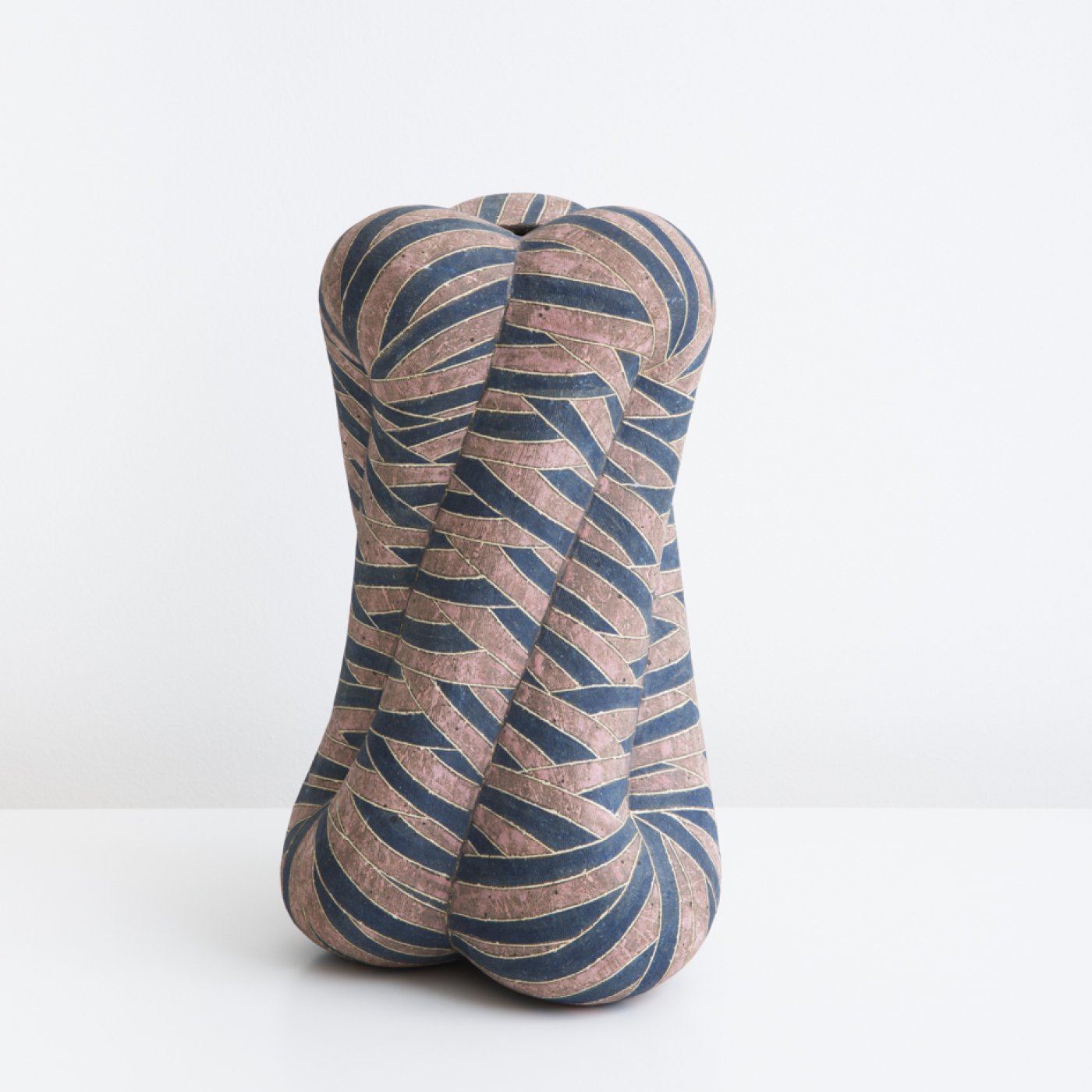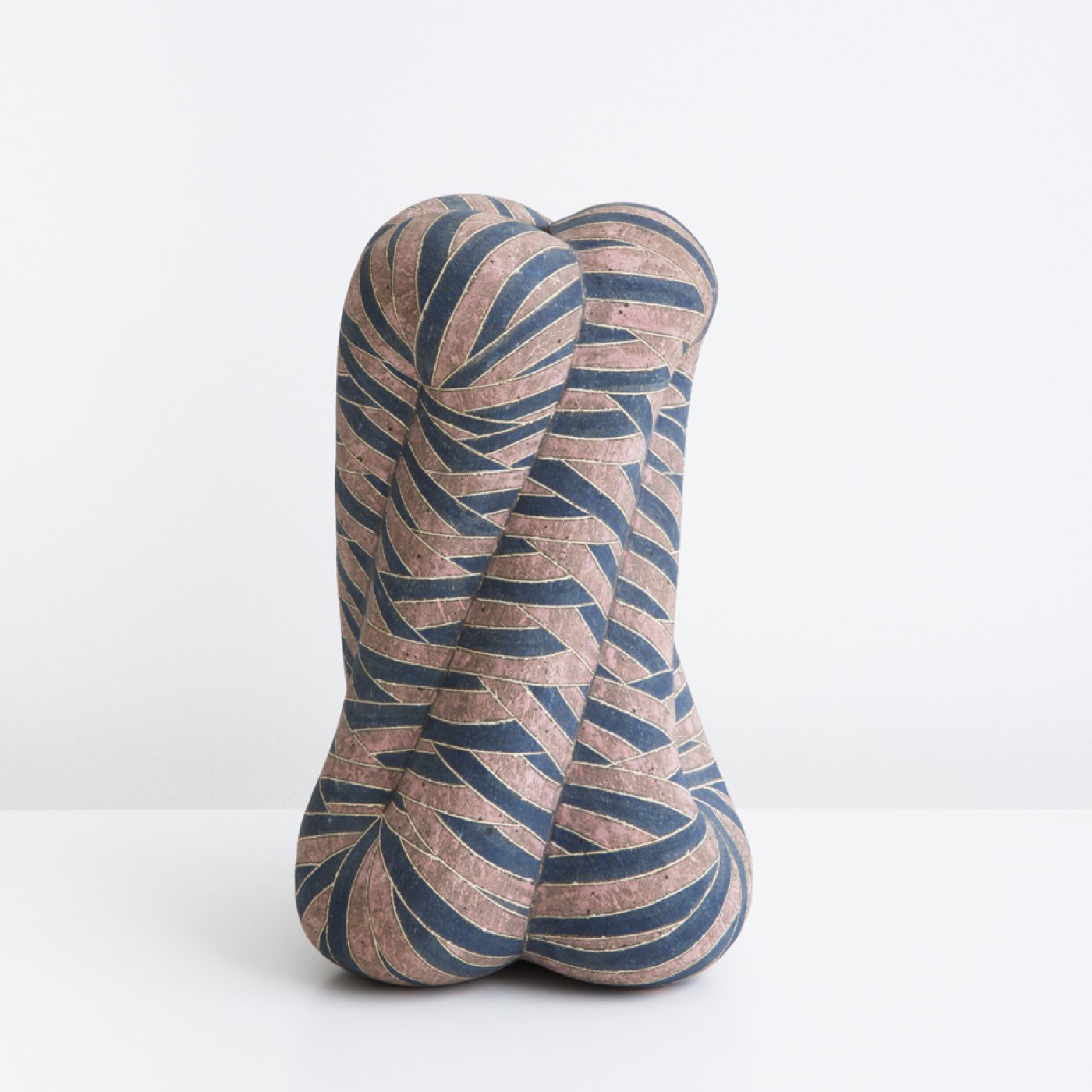Shingo Takeuchi
Inlay Vase
2009
stoneware
36 × 24 × 24 cm
stoneware
36 × 24 × 24 cm
About the artist
The organic, geometric stoneware sculptures by Shingo Takeuchi, worthy successor to the Seto tradition, have an unconscious balance of form and process. They embody the creativity that is first and foremost a symbol of Japanese tradition, combining dexterous manual skills with the warmth and power of fire, essential for transforming earth into an art object. His artistic work is not determined by practice and unconventional techniques, it is not the result of deep thought: the artist’s mastery in forming his sculptures comes from the personal experience that he has drawn from the observation of work by other ceramists.Deformation and destruction are part of the creative process, and the struggle between earth and fire is transformed into a divertissement. The sculptures, or simply vases as Takeuchi calls them, are a calibrated balance between the strength of the earthen material and the bold labyrinthine arches reminiscent of seeds and eggs that about to hatch.Sekki, Inlay, literally stoneware and inlay, are the names given to some of the works. They don’t have a deep meaning, but simply recall the technique used by Shingo which in Japanese is called yakijime or high temperature firing. Shingo admits this weakness and his inability to assign names to the works. It doesn’t matter, his works are rich in history and tradition. Names are just a minor detail.


